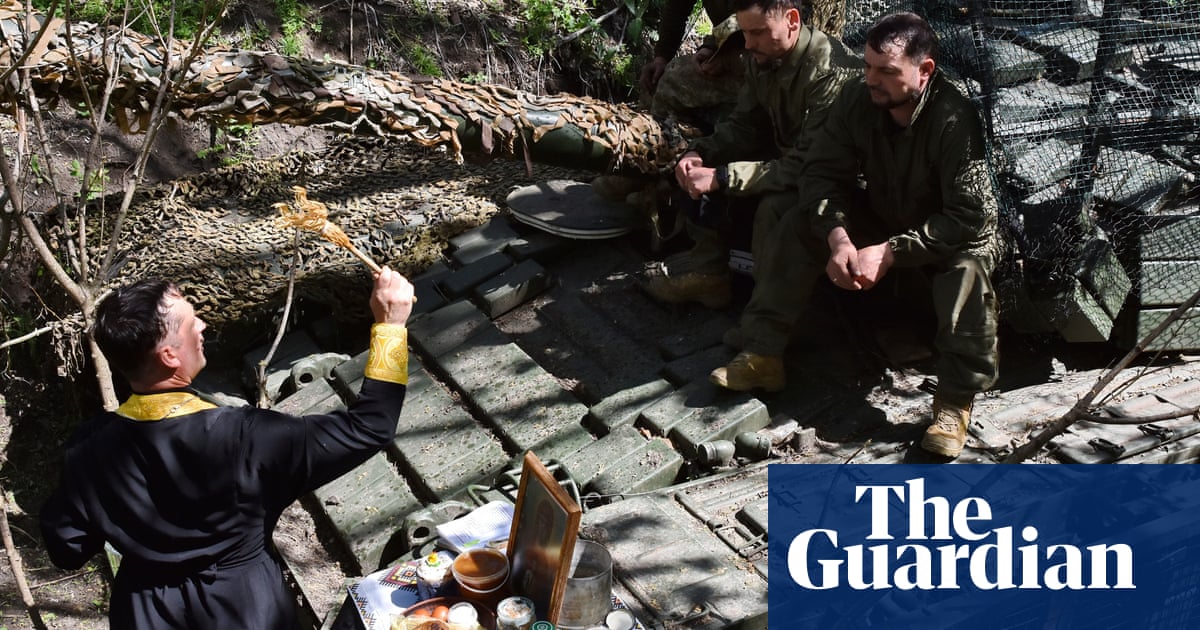Volodymyr Zelenskyy hasdismissed Vladimir Putin’s Easter ceasefireas a fake “PR” exercise and said Russian troops had continued their drone and artillery attacks across many parts of the frontline.
Citing a report from Ukraine’s commander-in-chief,Oleksandr Syrskyi, Zelenskyy said Russia was still using heavy weapons and since 10am on Sunday an increase in Russian shelling had been observed, he said.
The Russian army had even doubled its use of kamikaze drones, he added, saying that there were 26 assaults between midnight on Saturday and noon on Sunday. The 30-hour truce – announced by Putin on Friday – is due to end at midnight on Monday.
“We are documenting every Russian violation of its self-declared commitment to a full ceasefire for the Easter period and are prepared to provide the necessary information to our partners,” Zelenskyywrote on social media.
“In practice, either Putin does not have full control over his army, or the situation proves that in Russia they have no intention of making a genuine move toward ending the war, and are only interested in favourable PR coverage.”
He continued: “The Russian army is attempting to create the general impression of a ceasefire, while in some areas still continuing isolated attempts to advance.”
Video footage from the battlefieldappeared to confirm the Ukrainian president’s claim that the east of the country was under Russian fire. White puffs of smoke could be seen above the village of Uspenivka, in the Pokrovsk area of Donetsk oblast.
The Russians also reportedlyattacked an evacuation convoyin the village of Zoria, near the city of Kostiantynivka. At least two civilians and a rescue worker from the Proliksa aid agency were hurt when Russian drones targeted their cars.
“For us, it’s just another day of war – with shelling from various types of weapons and even one attempt to assault our positions,” Denys Bobkov, spokesperson for Ukraine’s 37th separate marine brigade, told the Guardian, in a message from the front.
Bobkov said that by 2pm on Sunday his brigade had recorded 16 drone attacks and two artillery strikes. It is fighting near the village of Novopavlivka, south-west of Pokrovsk and on the administrative border between Donetsk and Dnipropetrovsk oblasts.
The 66th brigade, based in the city of Lyman, also reported infantry attacks and attempts to repair damaged crossings. “The Russians are using the so-called ‘lull’ to improve their tactical position – to regroup in order to deliver another blow,” it said.
In Moscow, Russia’s defence ministry claimed Ukraine had broken the ceasefire more than 1,000 times. It said there had been more than 900 drone strikes, with damage to infrastructure and civilian casualties. It did not give further details.
After a bloody week, during which Russiakilled 35 people in a missile attack in the centre of Sumy, Ukrainian cities were relatively clam on Sunday. Worshippers gathered at St Volodymyr’s cathedral in Kyiv, where priests blessed their Easter baskets with Holy water.
“They’ve already broken their promise. Unfortunately, we cannot trust Russia today,” Olga Grachova, 38, who works in marketing, told the news agency Agence France-Presse.
The truce’s apparent failure comes as the US has signalled it is losing patience with both sides. On Friday, Donald Trumpsaid he was ready to walk awayfrom his attempt to broker a peace settlement, declaring: “We want to get it done.”
“Now if for some reason one of the two parties makes it very difficult, we’re just going to say: ‘You’re foolish. You’re fools. You’re horrible people’ – and we’re going to just take a pass,” he said. The US president denied claims that Putin was “playing” him.
The US secretary of state, Marco Rubio, met European leaders in Paris last week to discuss how to end the war. Leaks suggest the White House is pushing for a Kremlin-friendly deal that would freeze the conflict along the existing 1000km-long frontline.
Trump’s special envoy, Steve Witkoff, has suggested that Crimea and four other Ukrainian provinces could be given to Russia. The US is considering recognising Crimea as Russian and offering Moscow other incentives such as sanctions relief, Bloomberg reported.
The Kremlin has not responded to Zelenskyy’s offer on Friday to extend the Easter truce. It insists its original war goals must be achieved. They include the removal of Zelenskyy as Ukraine’s president, as well as the country’s “demilitarisation” and a guarantee of its non-Nato “neutral” status.
Since their disastrous meeting in February in the Oval Office, Zelenskyy has been seeking to improve relations with Washington. Last month, Ukraine accepted a 30-day US ceasefire proposal and is poised to sign an agreement on Thursday giving the US access to its minerals.
There are hints, however, that Zelenskyy is growing frustrated at the White House’s pro-Putin rhetoric. Trump has piled pressure on Ukraine – effectively cutting off military aid and temporarily pausing intelligence sharing – while taking no corresponding measures against Russia.
On Sunday, Zelenskyy appeared to take a swipe at Fox News. The rightwing US TV network broadcast live coverage of Putin attending an Orthodox Easter service in Moscow together with Russia’s patriarch, while incorrectly labelling Kyiv as part of Russia.
“Instead of broadcasting religious service from Moscow, the focus should be on pressuring Moscow to genuinely commit to a full ceasefire and to maintain it for at least 30 days after Easter – to give diplomacy a real chance,” Zelenskyywrote on X.
Ukraine’s foreign ministry said it had asked Fox News for an explanation. “If this was a mistake rather than a deliberate political statement, there should be an apology and an investigation into who made the mistake,” a ministry spokesperson said.
